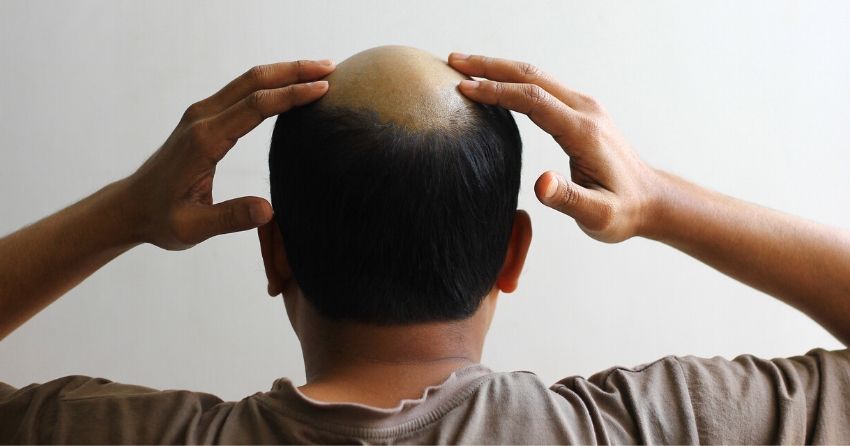Dissolvable Microneedle Patch Regrows Lost Hair in Mouse Model

-
Preliminary research finds a microneedle patch containing cerium nanoparticles combats baldness, leading to hair regrowth in mice.
-
Most over-the-counter hair growth treatments don't take into account two root causes of baldness — oxidative stress and poor circulation, which occurs from insufficient blood vessels surrounding hair follicles to deliver nutrients, cytokines, and other essential molecules.
-
This minimally invasive method delivers cerium-containing nanoparticles near hair roots deep under the skin and stimulates the formation of new blood vessels around the mice’s hair follicles to promote hair regrowth.
This article was posted on the American Chemical Society News:
Although some people say that baldness is the “new sexy,” for those losing their hair, it can be distressing. An array of over-the-counter remedies are available, but most of them don’t focus on the primary causes: oxidative stress and insufficient circulation. Now, researchers reporting in ACS Nano have designed a preliminary microneedle patch containing cerium nanoparticles to combat both problems, regrowing hair in a mouse model faster than a leading treatment.
The most common hair loss condition is called androgenic alopecia, also known as male- or female- pattern baldness. Hair loss is permanent for people with the condition because there aren’t enough blood vessels surrounding the follicles to deliver nutrients, cytokines and other essential molecules. In addition, an accumulation of reactive oxygen species in the scalp can trigger the untimely death of the cells that form and grow new hair.
Previously, Fangyuan Li, Jianqing Gao and colleagues determined that cerium-containing nanoparticles can mimic enzymes that remove excess reactive oxygen species, which reduced oxidative stress in liver injuries, wounds and Alzheimer’s disease. However, these nanoparticles cannot cross the outermost layer of skin. So, the researchers wanted to design a minimally invasive way to deliver cerium-containing nanoparticles near hair roots deep under the skin to promote hair regrowth.
As a first step, the researchers coated cerium nanoparticles with a biodegradable polyethylene glycol-lipid compound. Then they made the dissolvable microneedle patch by pouring a mixture of hyaluronic acid — a substance that is naturally abundant in human skin — and cerium-containing nanoparticles into a mold. The team tested control patches and the cerium-containing ones on male mice with bald spots formed by a hair removal cream.
Both applications stimulated the formation of new blood vessels around the mice’s hair follicles. However, those treated with the nanoparticle patch showed faster signs of hair undergoing a transition in the root, such as earlier skin pigmentation and higher levels of a compound found only at the onset of new hair development. These mice also had fewer oxidative stress compounds in their skin.
Finally, the researchers found that the cerium-containing microneedle patches resulted in faster mouse hair regrowth with similar coverage, density and diameter compared with a leading topical treatment and could be applied less frequently. Microneedle patches that introduce cerium nanoparticles into the skin are a promising strategy to reverse balding for androgenetic alopecia patients, the researchers say.
The authors acknowledge funding from the Ten-thousand Talents Program of Zhejiang Province, National Key R&D Program of China, National Natural Science Foundation of China, One Belt and One Road International Cooperation Project from the Key Research and Development Program of Zhejiang Province, Fundamental Research Funds for the Central Universities and Zhejiang Provincial Natural Science Foundation of China.
This study was published in ACS Nano in July 2021.





